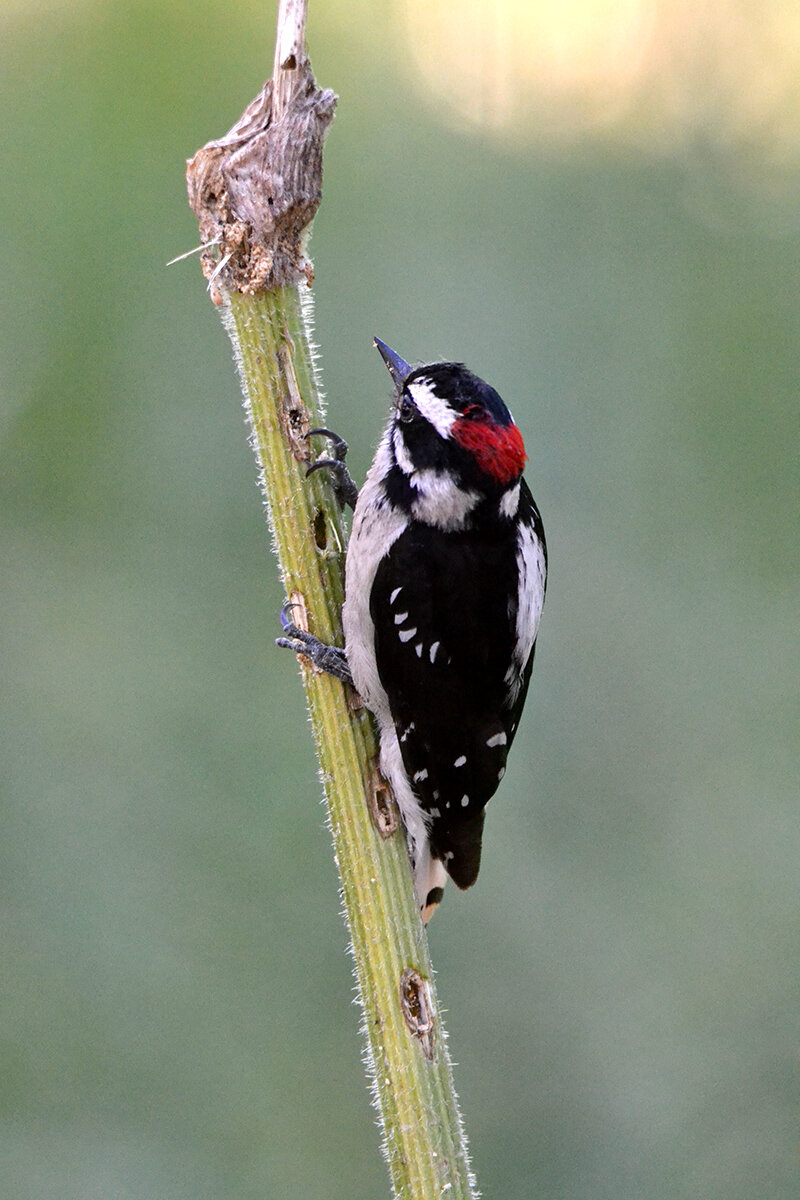Sitting in the shade of a ponderosa pine listening to the river flow, I heard the faint murmurings of the red-breasted nuthatch. The pine cones are beginning to open in the warm, late-summer sun and the nuthatch is on the scene to start collecting seeds for the winter. After retrieving a seed, it flew over and stashed it in the furrowed, mossy bark of a bigleaf maple. It merrily went about filling its larder for most of the morning.
Occasionally, it would take a break and forage for food - pine seeds, insects, spiders and other arthropods. All About Birds by Cornell Lab summed up their foraging behavior nicely: “Red-breasted Nuthatches move quickly over trunks and branches probing for food in crevices and under flakes of bark. They creep up, down, and sideways without regard for which way is up, and they don’t lean against their tail the way woodpeckers do. Flight is short and bouncy.” I will add that you will often see them facing downward, pausing to tilt their head upward to survey their surroundings.
Listen for the sound like a small tin horn as the red-breasted nuthatch toots and squeaks on its joyfully spirited way through the landscape.
Nature is an inexhaustible source of wonder. Hope to see you out there.
Resources:
https://www.allaboutbirds.org/guide/Red-breasted_Nuthatch/lifehistory

















































































